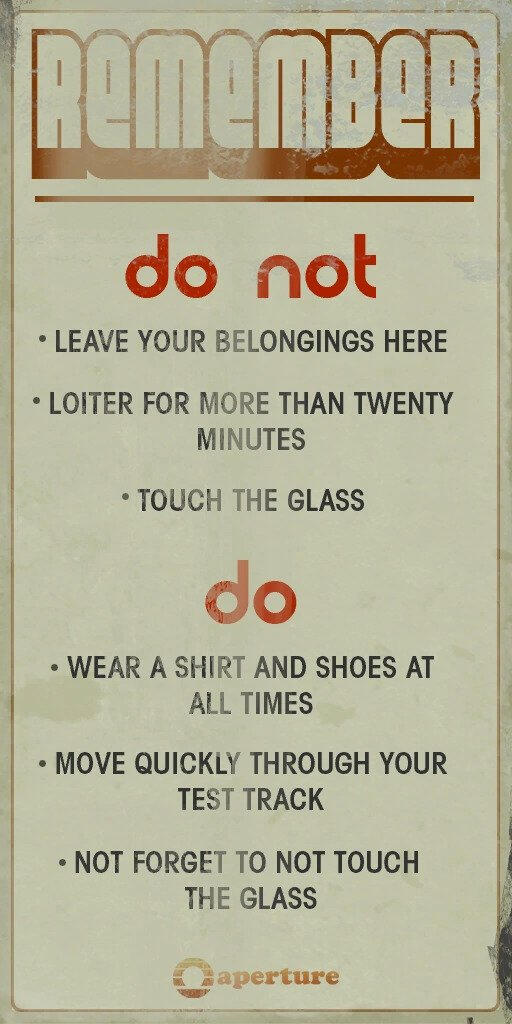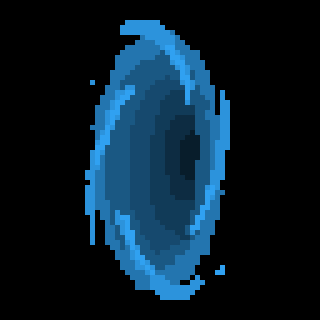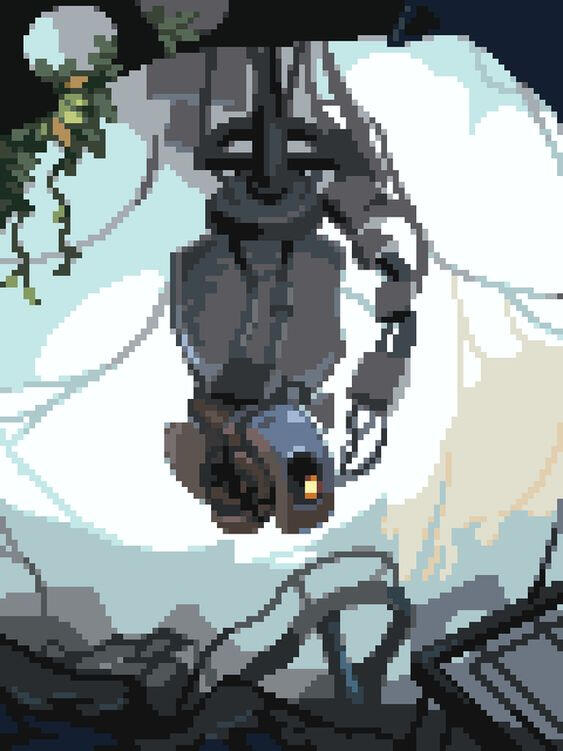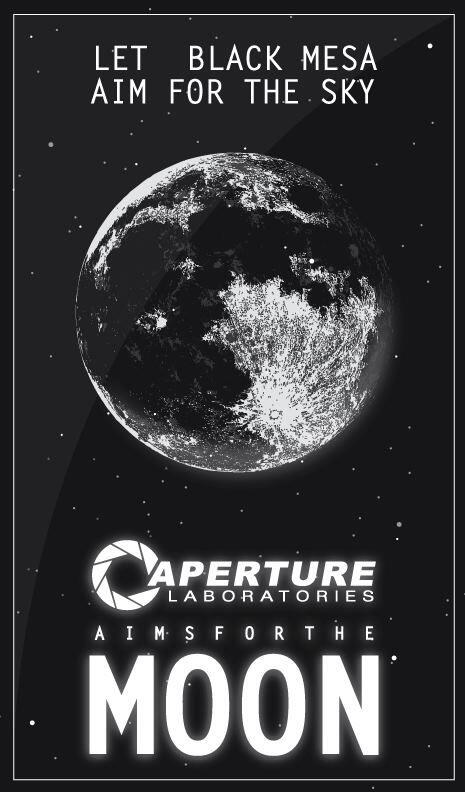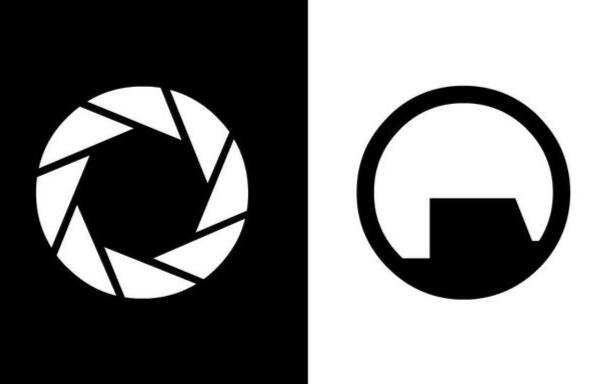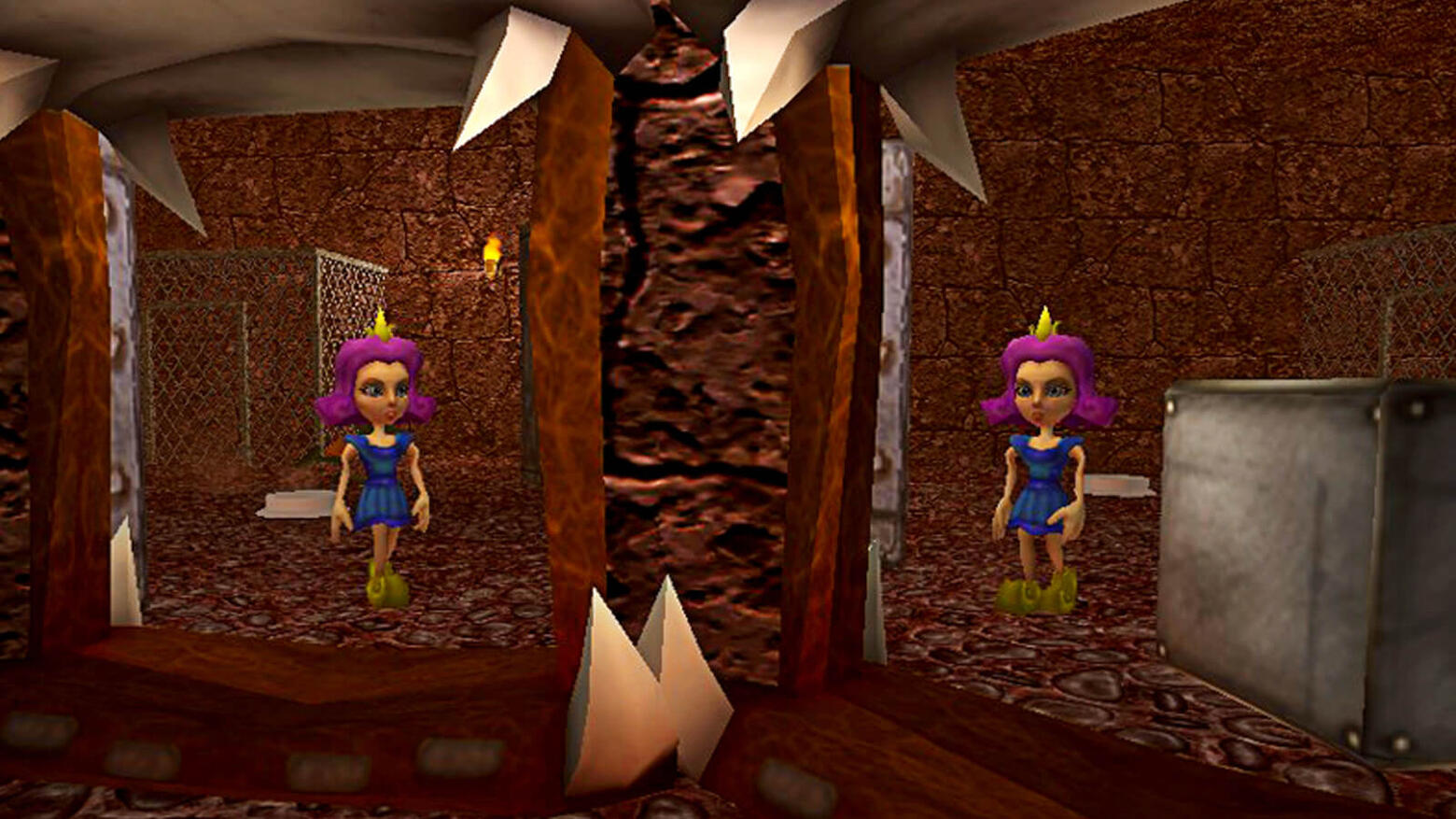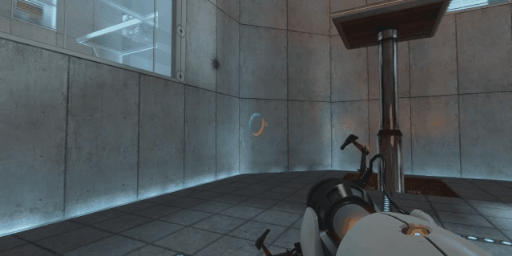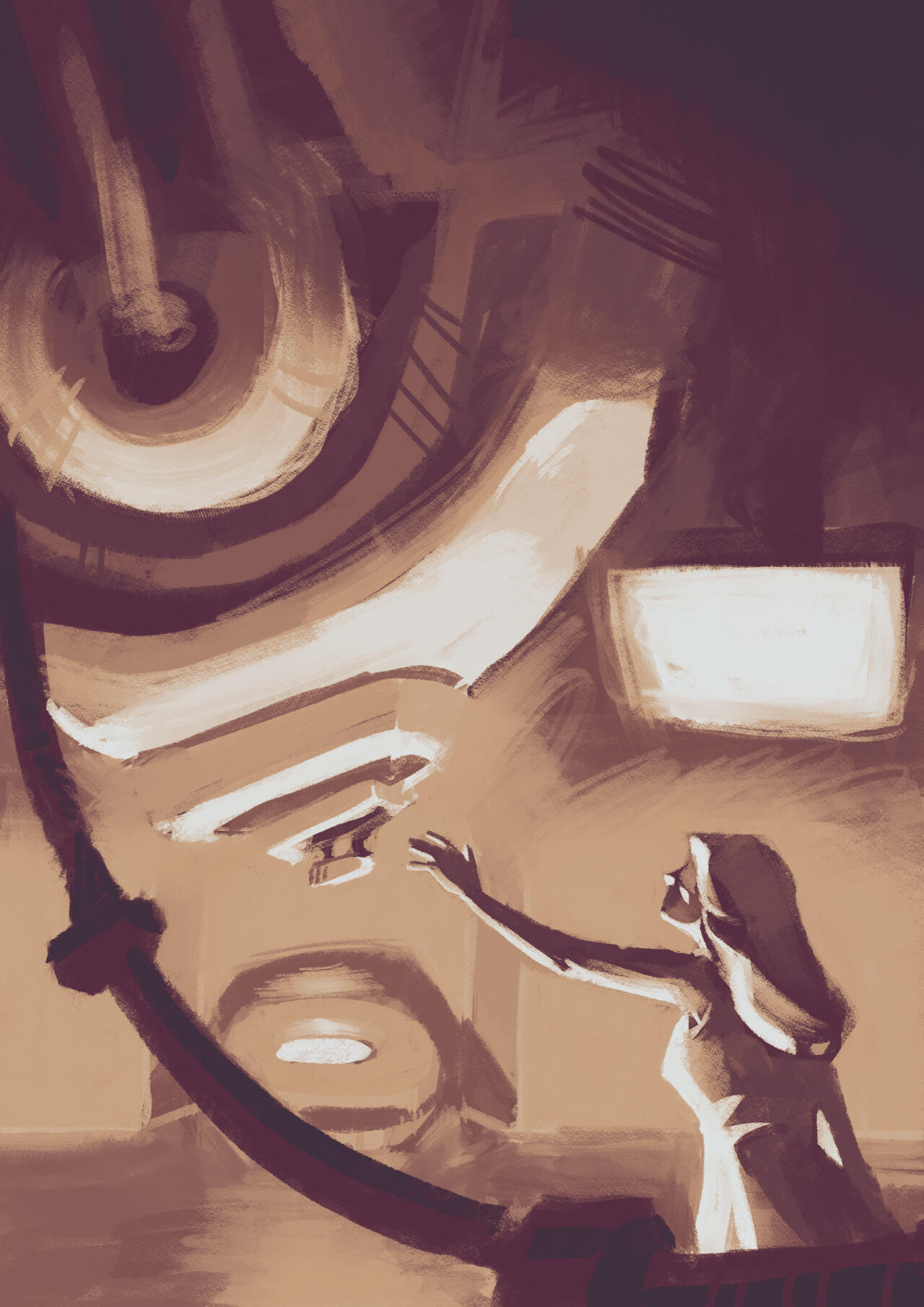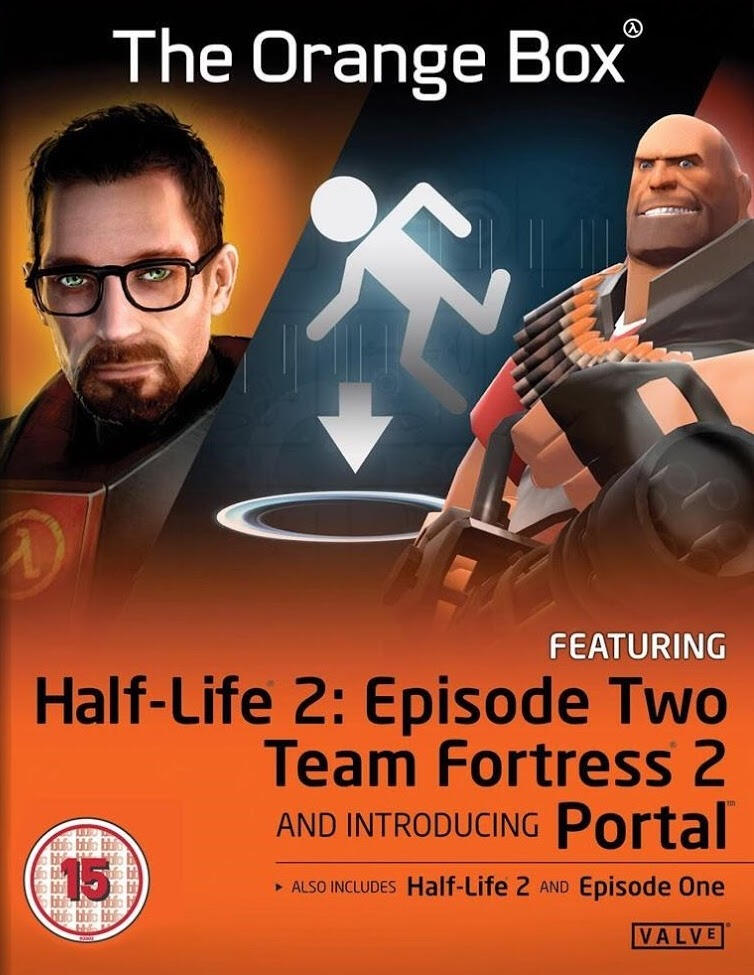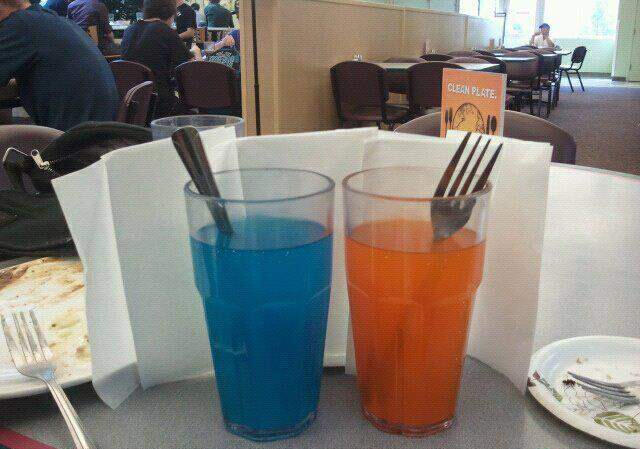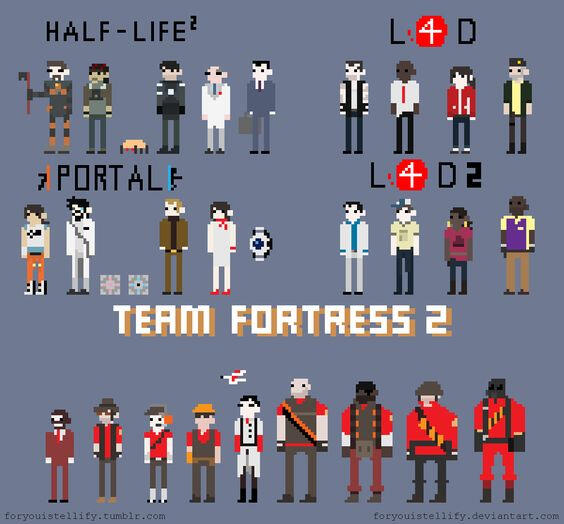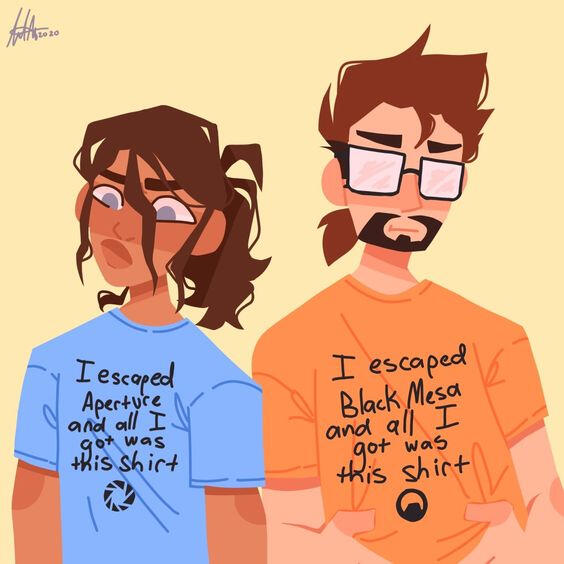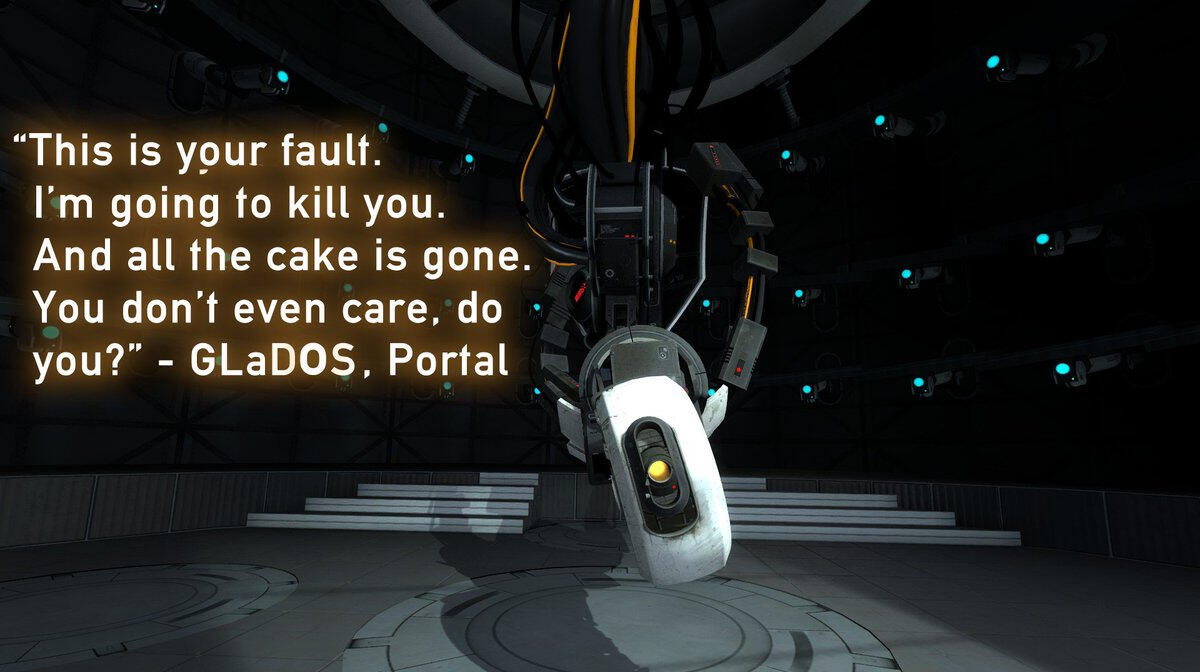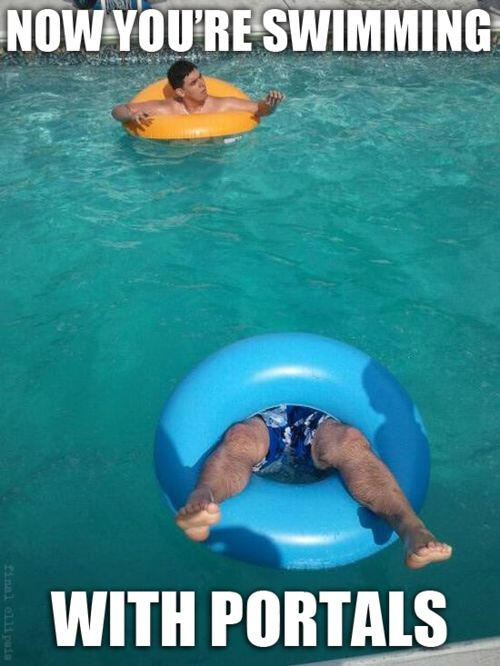WELCOME TO THE PORTAL PROJECT
by bazel pilla
what do these words have to do with each other?
These are the different aspects of the circuit of culture, as developed by du Gay et al. (1997) and discussed in the class The Cultural History of the Internet for which this website was made for. It notably outlines five interconnected areas for analyzing any cultural object: “how it is represented, what social identities are associated with it, how it is produced and consumed, and what mechanisms regulate its distribution and use” (3). This is the framework used to analyze Portal on this site.
what is portal?
Portal is a single player, first-person shooter video game that consists of multiple physics based puzzles rather than combat that must be completed with the Aperture Science Handheld Portal Device. It was published by Valve Corporation in 2007 with a sequel released in 2011. It is widely considered one of Valve's best games, with overwhelmingly positive reviews on Steam. You can read more about the game's plot on it's dedicated wiki.
this website is not optimized for mobile viewing. please use a computer.
basic summary: what goes into production?
When discussing production, it's important to consider who is making, paying for, and creating ideas for the piece. In this sense, it would consist of the writers, game designers, the game company, artists of each asset within the game, and any other individuals involved in supporting the creation of the video game.
a pixel drawing of portal's antagonist, glados
a poster referring to aperture laboratories going to the moon before black mesa from half-life
portal and half-life
The writers of the Portal series, Erik Wolpaw and Chet Faliszek, collaborated with Marc Laidlaw, the writer of the Half-Life video game series from Valve to connect the game's storyworld to the pre-existing Half-Life universe. This allowed for a sense of familiarity to Half-Life fans as well as higher story line stakes down the line within the two game series. The games are heavily associated with each other.
on the left: aperture science from portal's logo.
on the right: black mesa from half life's logo
production of portal
Portal began as a college student game called Narbacular Drop made by seven students at DigiPen University. The story goes that a representative from Valve Corp saw a demo of the game at a career day at the university and the students were invited to the company to give a demo to other employees. By the end of the day, Valve offered the students jobs at the company.The game Narbacular Drop was very different from the game Portal that we know today. The main attraction was its inclusion of portals as a game mechanic. A team of only ten people including the students then went to redevelop the game into what we know as Portal today within the span of two and a half years at Valve.
a screencap from Narbacular Drop
portal's level design
an in-game use of the portal gun to create portals and use a weighted button
Due to the strikingly new game mechanic, Portal and its designers made sure to create each level with one singular mechanic in mind. This creates a game that makes the player feel smarter, and is easier for beginners. Tejeev Kohli, a developer on Portal, has explained the importance of training players on new mechanics. Notably, portals are first introduced without the Portal Device. The Aperture Science Portal Device is not received until some time after the beginning and when received the player can only create blue portals, not orange, until fully adjusted to the device.The game also only consists of few main important mechanics: the portal, cubes, doors, and buttons. Any other mechanic supplement the use of these main mechanics being used, such as wall types, lasers, etc.Because the game was created in such a short amount of time, the mechanics are focused and extremely intentional. Walpow has commented at gaming conventions the game’s success was likely due to “insane amounts of play-testing and development constraints."
basic summary: what is considered consumption?
Consumption can happen in many forms particularly for video games. This includes playing the official game, but also watching playthroughs and consuming an form of fan made content to further engage with the game or fandom. It's also important to consider who the consumers are, the community around it, and how it is marketed to consumers.
consumption of portal
fan art of caroline and glados from portal from a fan blog
Portal's single-player puzzle aspect allows for a more accessible game. Players don't need friends to get in on the fun, or even a console. YouTube is full of playthroughs of the game, with or without commentary based on preference. As a popular game, multiple types content is easy to find on the web. Fans can easily consume canonical and non-canonical information alike from the Portal Wiki or the Half-Life Wiki's Portal project. Official game content such as the famous end-credit song sung by GLaDOS or game trailer can also be found on YouTube via fans of the game.Due to Portal having the same universe as Half-Life as well as being heavily marketed together, many fans and communities online overlap and players often play both.
portal's release
Portal was initially released in 2007 within Valve's bundle called The Orange Box. This was valve's main strategy of marketing the unknown game to players, as it was packaged with Half-Life 2, Half-Life 2: Episode One, Episode Two, and Team Fortress 2. These were Valve's most popular games at the time, encouraging players to buy the new game as well. It was later then released for PS3 and is still available on Steam for PC and MacOS, though it is incompatible with more recent MacOS versions.It is generally less expensive than most games today, available on Steam for $9.99 and often goes on sale during holidays for $0.99.
the cover of the orange box
popular portal meme that has circulated the internet since it's release in 2007
basic summary: what is identity in culture?
It is greatly important to consider what identities are associated with pieces of culture. This includes the identities of all individuals involved with the other aspects of the circuit such as those who consume, produce, regulate, etc. The item itself can also form an identity that is associated with it based on the individuals' identities as well. The "common knowledge" needed to successfully engage with the item is also greatly important and influnces the identity.
pixel art of characters from valve's most popular titles
fan art depicting Portal and Half-Life's main characters together
identities of portal
Portal is heavily associated with its game company, Valve Corporation, due to its popularity within the gaming community. Because of this association, it is also commonly associated with Valve's other games
thanks to Valve's creation of The Orange Box. Half-Life is one of the biggest parts of Portal's identity within gaming communities due to the joint universe created within the games and well known rivalry between Aperture Laboratories and Black Mesa.
valve's logo
Due to the heavily emphasized importance of training players on new mechanics, the game is extremely beginner friendly to first time players of the game specifically or players new to gaming in general.The lore behind the game is not needed to solve any puzzles, allowing for players who prefer to focus on the game play rather than story to do so. For players with opposite intentions, there is a gold mine of lore related to the integration of Half-Life and the history behind Aperture Science beyond what is presented within the game.
It can be found all over the internet along with fan content.
basic summary: what is regulation in video games?
Regulation regarding video games is extremely similar to movies. The main goal is to prevent piracy and ESRB ratings to help enforce appropriate material for appropriate ages. Piracy of video games is much more difficult and dangerous as it requires downloading of software and cannot be streamed. The company must also regulate all copyrighted materials connected to the game such as music, images, etc.
glados with one of her popular quotes from in-game
portal and copyright
Valve appears to be quite loose regarding fans using copyrighted material. Images from game play commonly circulate the internet, and more notably, songs from the franchise have rarely gotten taken down. This is evident with videos like a re-posting of the song Still Alive on YouTube which garnered 44 million views since it's upload in 2007 and has not been targeted by Valve or DMCA.
regulating portal
Portal does not have any regulation that is specific to it, it is regulated as many video games are. It is rated T for Teen by ESRB for its dark humor regarding murder and some blood without any explicit gore in the game.Some games are known for anti-piracy software, not allowing players to use versions that are "cracked" or pirated. Portal does not have that, meaning that a pirated version would be playable with limitations such as the inability to play custom maps.
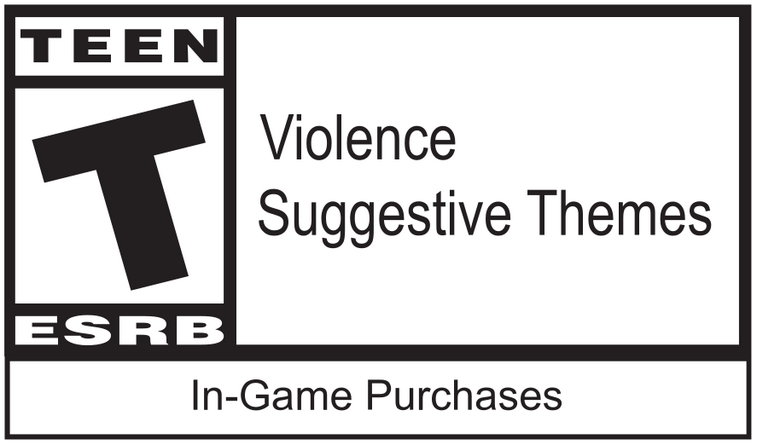
esrb's teen rating logo
basic summary: what is representation of a game?
Representation, while very closely related to identity, is more about how the identities of the item or item itself are represented in other media as well as how they are often perceived. Representation can also include the themes and tone of the item and feelings associated with it.
a meme referencing blue and orange portals by using swimming tubes
the cake is a lie
One reference that has reached the biggest audience is the phrase "the cake is a lie." It references the cake that GLaDOS promises the player at the end of testing, though later in the game scribbles from Doug Rattmann say the message "the cake is a lie" over and over.After it grew in popularity, it gained a new meaning on the web unrelated to Portal and simply meaning you are chasing an unattainable goal.
representations of portal
Portal is often represented easily with the distinctive blue and orange colors of the portals within the game. These colors are often used within posts online to signify portal without mentioning it by name, with another example being the infamous portal cup meme similar to the one on the left that was posted without caption. Due to the game's popularity, many memes circulate the web referencing the franchise.The characters also have unique designs, allowing for immediate recognition of characters such as Wheatley, GLaDOS, or even the companion cube which are found around the web.
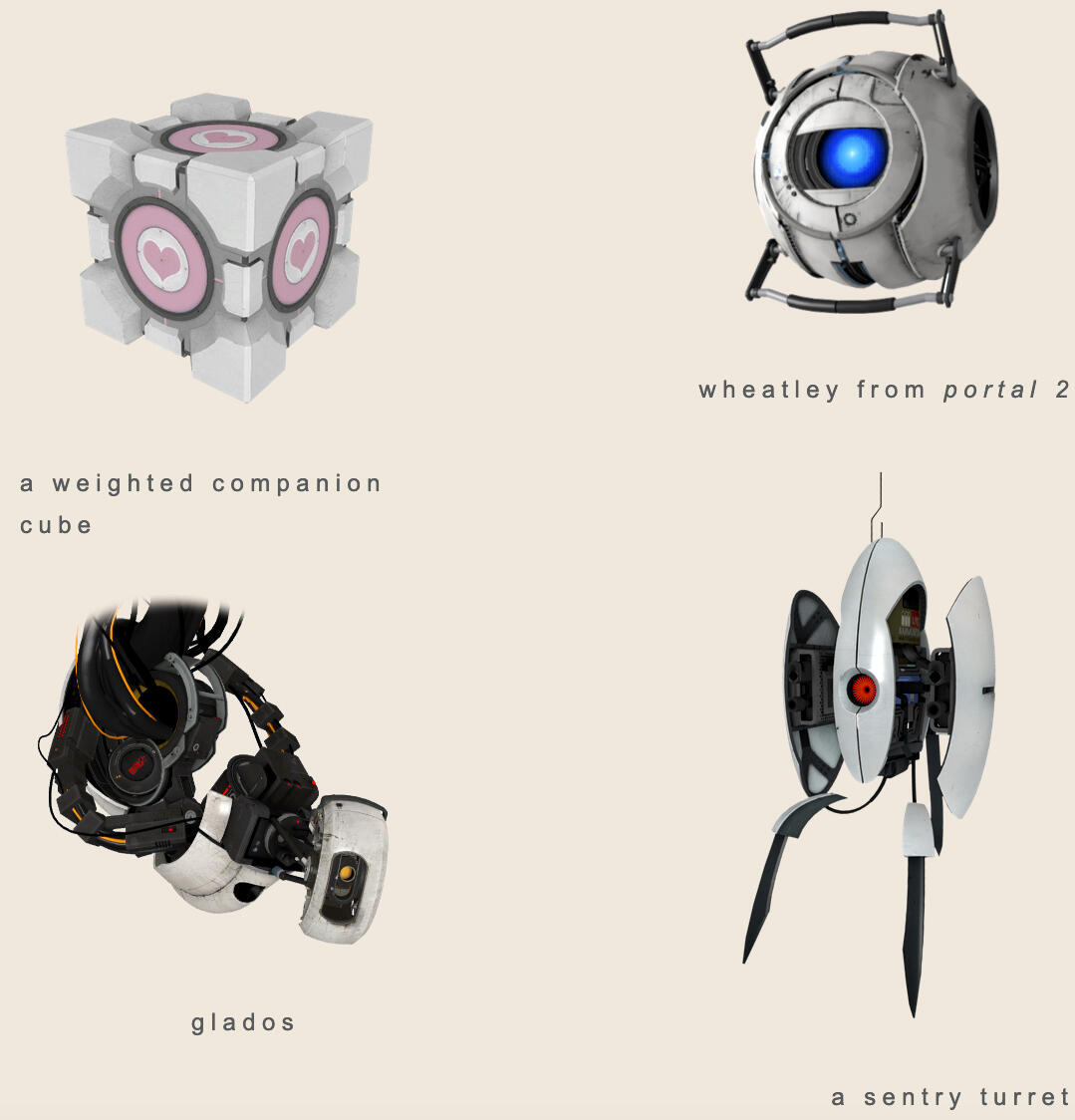
Because the game is often represented by these characters, it's important to note their dark, dry humor especially found in GLaDOS. Examples of her humor can be found within the many quote compilations on YouTube. Portal has become known for this type of sarcastic humor.
sources
“Aperture Science Weighted Companion Cube.” Half-Life Wiki. Accessed December 9, 2022. link.
Coulton, Jonathan et al. Still Alive. YouTube. OverTheGun, 2007. link.
CombineOverWiki. “Portal Trailer (Orientation Video No. 1 - A Safe and Healthy Environment).” YouTube, July 18, 2010. link.
Demaine, Erik D., Joshua Lockhart, and Jayson Lynch. “The Computational Complexity of Portal and Other 3D Video Games.” CoRR abs/1611.10319 (August 13, 2018).
“File:Aperture Laboratories Logo.svg.” Wikimedia Commons. Accessed December 9, 2022. link.
“GLaDOS.” Portal Wiki. Accessed December 9, 2022. link.
Keenan, Andrew. 2018. Gameplay in an unfamiliar environment: Novice and expert adult players encountering portal for the first time. Ph.D. diss., University of Toronto (Canada). link. Accessed November 9, 2022.
Larchuk, Travis. “'Portal 2': A Student Video Game, All Grown Up.” NPR, April 19, 2011. [link]9https://www.npr.org/2011/04/19/135511250/portal-2-a-student-video-game-project-all-grown-up).
Munt Chunk. Portal Is Perfect. YouTube, 2022. link.
“Portal.” Computer software. Valve Corp., 2007.
“Portal.” Half-Life Wiki. Accessed November 9, 2022. link.
Schuhart, Jonah. “Why Portal Is a Perfect Video Game.” ScreenRant, March 29, 2021. link.
RPS. “Untold Riches: An Analysis of Portal's Level Design.” Rock Paper Shotgun. Rock Paper Shotgun, September 20, 2013. link.
“Sentry Turret.” Portal Wiki. Accessed December 9, 2022. link.
“Wheatley.” Portal Wiki. Accessed December 9, 2022. link.
wizard0rb. Web log. wizard0rb (blog). Tumblr. Accessed November 9, 2022. link.
all images included on this site are embeded with links leading to their source site and can be found by clicking on the image therefore their sources are not listed here.
this is with the exception of the aperture laboratories logo found on each page which instead leads to an archive of the official aperture website and the table of PNGs on the representation page which are without links due to the nature of it being one image. these sources are included in the list above.

